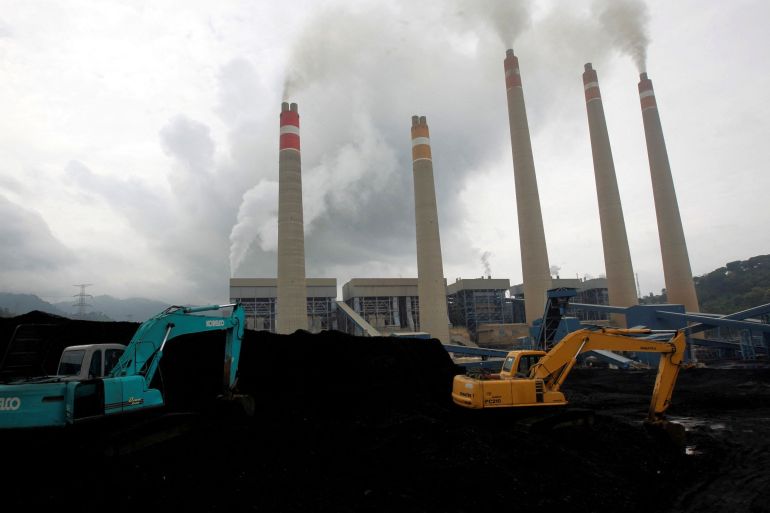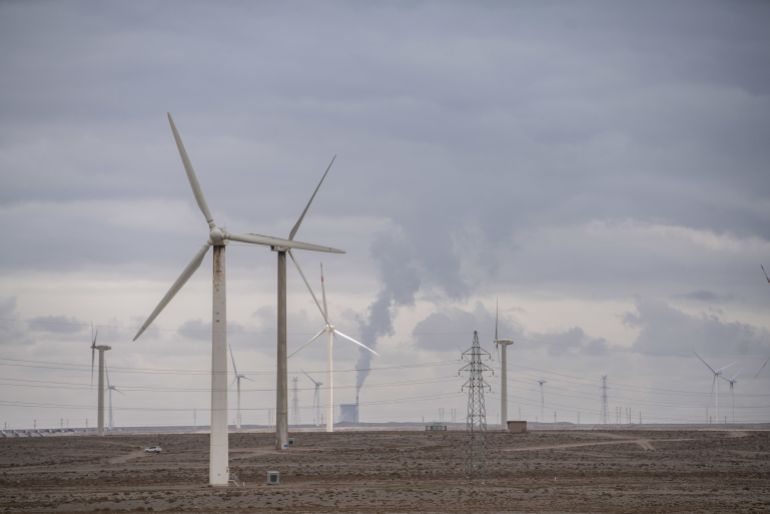In Southeast Asia, decades-long deals stymie shift away from coal
Power purchase agreements that ensure “coal lock-in” for decades are complicating the region’s transition away from fossil fuels.

GNPower Dinginin is one of the Philippines’s newest and biggest coal-fired power plants. Located in Bataan province on the island of Luzon, the $1.7bn facility began construction in 2016 before launching commercial operations late last year.
Plans are underway to add a second 668-megawatt unit that would expand total capacity to 1,336 megawatts. Like other coal plants in the Philippines, GNPower Dinginin materialised years before President Rodrigo Duterte’s administration banned new coal projects in 2020. Since the ban doesn’t apply to existing ventures, young facilities such as GNPower Dinginin ensure that coal will remain the Philippines’s primary energy source for years to come.
Keep reading
list of 4 itemsChildren in Syrian ISIL prison living in dire conditions: UN
Kenyan youth are not to blame for their election apathy
Ukraine says don’t believe ‘apocalyptic predictions’ over Russia
Not only is this bad news for climate action, it also doesn’t make economic sense as global energy demand slows and renewable energy prices fall, climate economists have warned. Holding the Philippines and other countries across Southeast Asia back from phasing out coal sooner is a rigid financing model that guarantees coal plants stay active for decades at a time.
Under power purchase agreements (PPAs), which are in widespread use across the region, utility companies pay coal plants to generate power for a 20 to 30 year period irrespective of external factors – a scenario known as a “coal lock-in”.
“Asian emerging markets are risky investments, which is why investors and project developers require financial incentives and higher returns on equity while investing in these markets,” Haneea Isaad, an energy finance expert at the US-based Institute for Energy Economics and Financial Analysis (IEEFA), told Al Jazeera.
GNPower Dinginin has PPAs with 30 utilities and two retail electricity suppliers. The long-term nature of these contracts insulates coal plants against market pressures, meaning owners have little incentive to shut down plants that produce guaranteed returns. PPAs are in many cases unprofitable for utilities since these companies are paying more for coal than they would for increasingly affordable renewables.
More than 60 percent of renewable power generation added in 2020 cost less than the cheapest new fossil fuel option, according to a report released by the International Renewable Energy Agency (IRENA) last year. Building new renewable energy capacity would be cheaper than continuing to operate 39 percent of the world’s existing coal capacity, according to a 2020 report by the Rocky Mountain Institute, Carbon Tracker Initiative and Sierra Club.

Global electricity demand is also set to slow between 2022 to 2024, growing at an annual average rate of 2.7 percent versus 6 percent in 2021, according to the International Energy Association (IEA), with more than 90 percent of that demand servable by renewables such as solar and wind.
Terminating a PPA early can be a costly process, leaving the utility to pick up outstanding taxes, bank debts, equity capital investment and compensation to the coal plant developer for lost profits. In the case of a $1bn coal plant with a 20-year PPA, early termination could cost a utility between $555m and $845m, according to an IEEFA analysis.
Those costs are likely to be passed down to consumers in the form of higher electricity prices, according to David Elzinga, a senior energy specialist at the Asian Development Bank (ADB).
“There’s the climate angle but there’s also the cost of power production to keep in mind. The risk of doing nothing is thus significant from both a climate and financial perspective,” Elzinga told Al Jazeera.
Early PPA termination on the buyer’s end, which is usually a state-owned company in emerging Asia, “could hurt investor confidence and lead to less deals reaching financial closure,” the IEEFA’s Isaad said. In Indonesia – the world’s biggest thermal coal exporter – and Vietnam, roughly 60 percent of coal-fired assets are owned by state-owned entities, Isaad said.
PLN, Indonesia’s state-owned power company and the world’s 15th biggest owner of coal power plants, has pledged to retire three of its plants by 2030 and shut the rest by 2055 but cannot cancel its PPAs, Rida Mulyana, director general of electricity at the Ministry of Energy and Mineral Resources, told local media last year. At best, PLN can negotiate with investors and power producers, Mulyana said.
While rich countries such as Canada have government agencies that buy out PPAs, many cash-strapped economies can’t afford that option.
The Philippines’s government agency that privatises and manages the debt of state power assets is unable to buy out coal plants without “long-term and low-cost funds,” the Manila Bulletin quoted the agency’s board chairman, Carlos G Dominguez III, who is also the Philippines’s finance secretary, as saying last year.
‘Challenge for lenders and owners alike’
“Refinancing coal power plants will be a challenge for lenders and owners alike as environmental constraints put pressure on future financing pathways,” Ken Lee, senior analyst at Wood Mackenzie in Singapore, told Al Jazeera.
Blended finance programs that tie a refinancing mechanism, such as green bonds or ratepayer-backed bonds, to reinvestment in clean energy have been touted as a possible solution. The ADB’s Energy Transition Mechanism, announced last year, aims to retire 50 percent of coal-fired power plants in Indonesia, Vietnam, and the Philippines over the next 10 to 15 years – a goal that requires $30bn-60bn in financing based on calculations of $1m-$1.8m per megawatt, Elzinga said.
Plants in Indonesia, Vietnam, and the Philippines are younger so have more life and more financial value, he said. The ADB seeks to use concessional loans from governments and the donor community as well as market-based financing for its pilot phase.
So far, private players seem interested with Prudential, Citi, HSBC and BlackRock Real Assets all reportedly in talks with the ADB. The emergence of international carbon markets, as outlined in the Paris Agreement, could sweeten the deal for investors.
Placing a financial value on carbon emissions avoided by the early closure of coal plants could reduce debt levels and lower overall risk – a factor underpinning the InterAmerican Development Bank’s $125 million package to Chilean utility ENGIE Energía last year that has been billed as the world’s first pilot project to monetize the cost of decarbonization.
With more than 40 countries pledging to phase out coal power at November’s Cop26 conference, energy transition schemes such as the ADB’s are likely to be closely monitored by governments, utilities and consumers alike.
“Companies, over the last few years, have had shareholder pressure to exit coal so getting them to invest in coal plants might attract criticism but we’re asking companies to invest for the sole purpose of retiring these facilities,” Elzinga said. “It would be much easier if we asked them to invest in renewables but that wouldn’t resolve coal’s lock-in issue.”